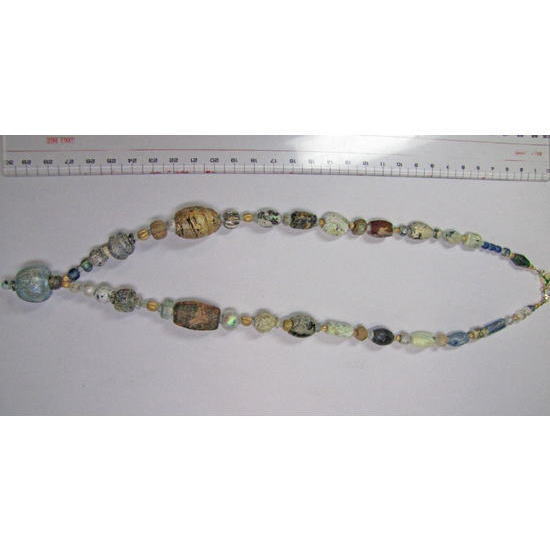MALAIKA
Ancient Roman Iridescent Glass
Ancient Roman Iridescent Glass
SKU:hn0609-015
Couldn't load pickup availability
Product Description: This strand features Roman beads dating back to between 100 BCE and 300 CE, showcasing stunning iridescence. The iridescence, a natural phenomenon caused by the glass being buried underground for centuries, gives the beads a unique silver or rainbow-like sheen.
Specifications:
- Origin: Alexandria (modern-day Egypt)
-
Size:
- Length: 55cm
- Size of central bead: 15mm x 17mm
- Special Notes: As these are antique items, they may have scratches, cracks, or chips.
About Roman Beads:
Era: 100 BCE to 300 CE
Origin: Alexandria (modern-day Egypt) and coastal regions of Syria
During the 1st century BCE to the 4th century CE, glass craftsmanship flourished in the Roman Empire, leading to the production and export of numerous glass items as trade goods. These glass products, made along the Mediterranean coast, spread across vast regions from Northern Europe to Japan.
Initially, most glass items were opaque, but by the 1st century CE, transparent glass gained popularity and spread widely. Beads crafted during this era were highly valued as jewelry. Fragments of glass originally made into cups or pitchers were often repurposed into beads and are more commonly found, making them relatively affordable even today.
Share



